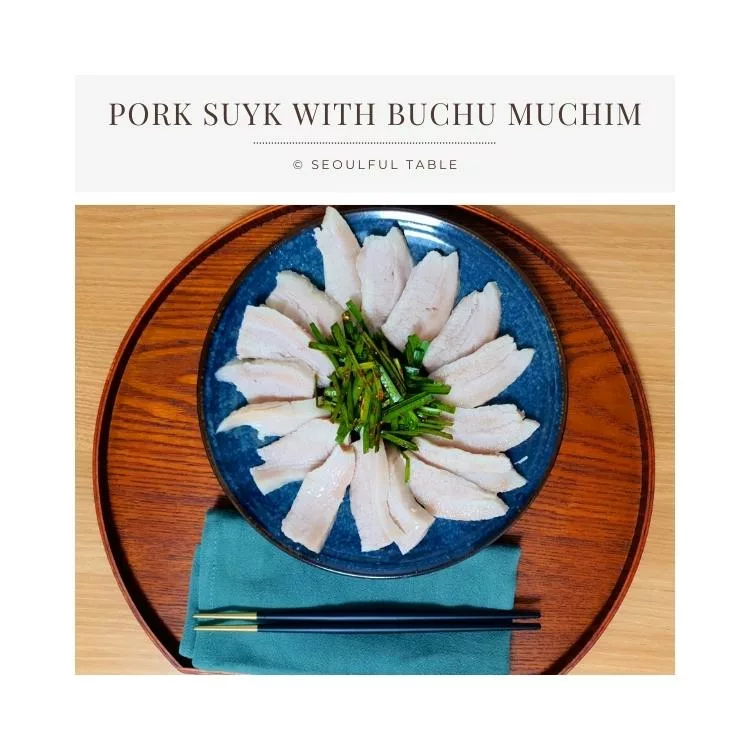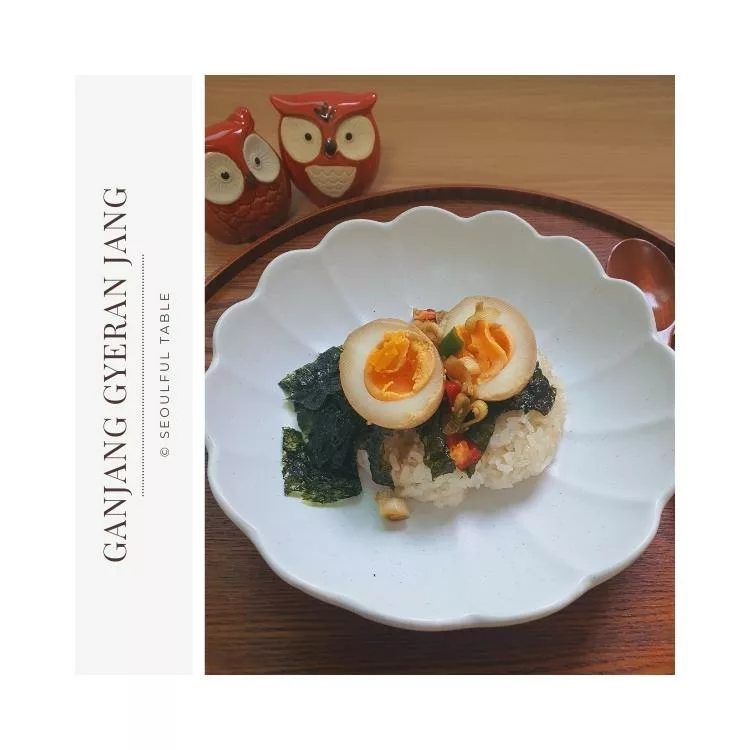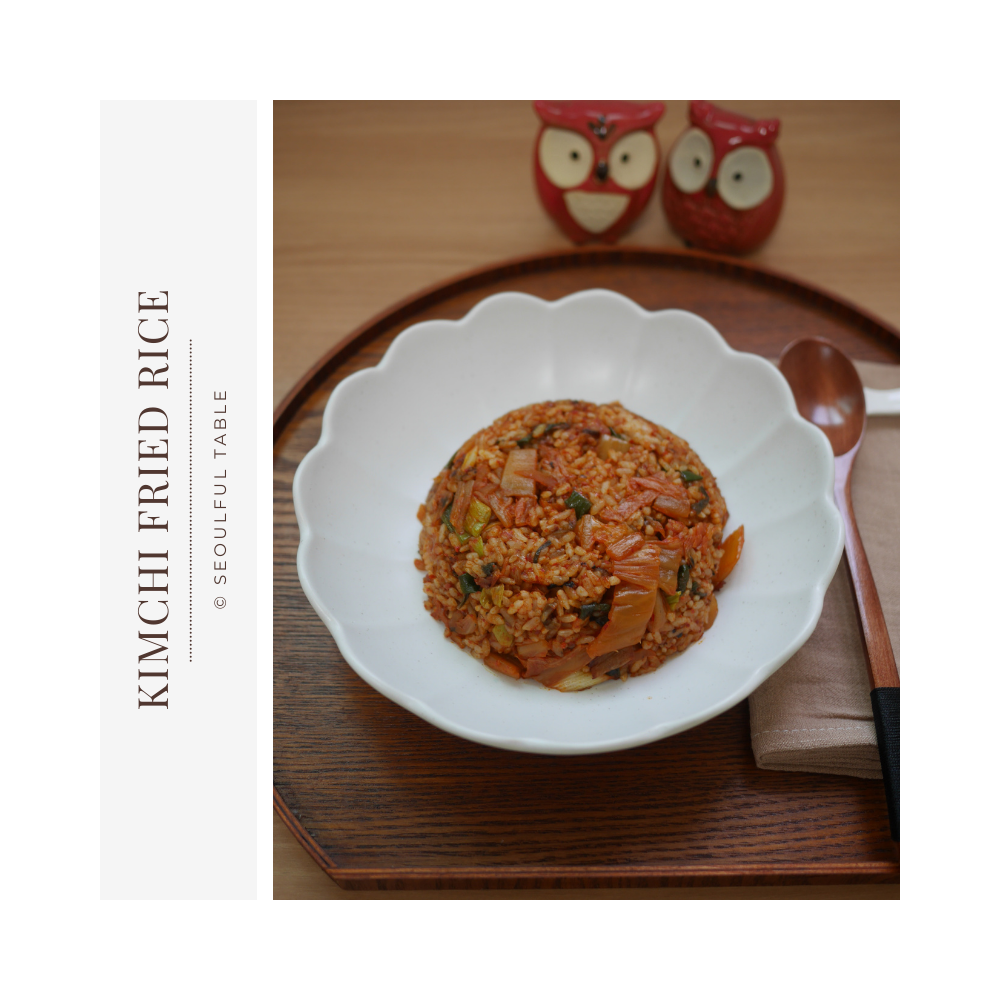Vibrant dishes like kimchi, bulgogi, and bibimbap may come to mind when one thinks about Korean food. However, Korea’s gastronomic range extends much beyond these meals. Enter ‘Suyuk’ and ‘Bossam,’ two of Korea’s most recognized pork dishes that testify to the country’s ancient culinary tradition. If you enjoy both pig and Korean food, you’re in for a treat. Today, we’re looking into the realm of pork suyuk and how it relates to the famous bossam recipe.
Simple Pork Suyuk Recipe: A Taste of Korea
This dish takes a different approach to the traditional Suyuk, departing from its typical preparation procedure. It is acquiring enormous popularity among modern Koreans, demonstrating the country’s changing tastes. This delectable Korean recipe makes use of the sensitive Hangjeongsal(Pork neck) cut of pork, which is recognized for its high fat content, resulting in a soft and juicy bite. The beef is slowly simmered on low heat with the natural broth (vegetable liquids) generated from onions and green onions, enhancing its health advantages.
Pork Suyuk pairs beautifully with “buchu muchim,” or seasoned chives, and is especially suitable for individuals on a keto diet. Chives are not only tasty, but also high in nutrients. Their health benefits compliment the rich and soft Suyuk, resulting in a tasty and nutritionally balanced combo.
servings : 3 people
Ingredients:
- 1.5 lbs Pork neck (other cuts like pork belly are also fine)
- 1 onion, sliced
- 2 spring onions, roughly cut
- 1 tbsp mirin or white wine
Instructions:
- Rinse the Pork neck(항정살) under cold water.
- In a pot (preferably a thick stainless-steel pot), add 1 tablespoon of mirin or white wine.
- Layer the sliced onions at the bottom.

- Place the Pork neck(항정살) on top of the onions.
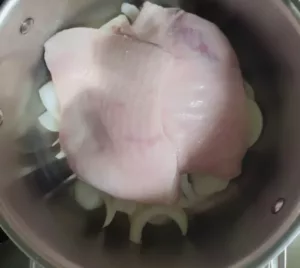
- Lay the spring onions over the Pork neck(항정살).
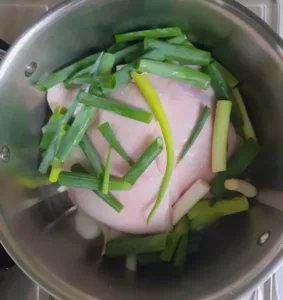
- Cover the pot and simmer on the lowest flame setting for about 35 minutes, ensuring the ingredients don’t burn. Note that the onions might turn slightly brown, but that’s natural and not something to worry about.
- Once cooked, slice the pork and serve with ‘buchu muchim’ (garlic chive salad).
Buchu Muchim Recipe:
Ingredients:
- 1 bunch of garlic chives (buchu)
- 2 tbsp soy sauce
- 2 tbsp vinegar
- 1 tbsp sugar (honey or oligosaccharide works too)
- 2 tbsp red chili powder
- 1/2 tsp toasted sesame oil (참기름)
- 1 tsp sesame seeds (참깨)
Instructions:
- In a bowl, combine 2 tbsp of soy sauce, 2 tbsp of vinegar, 2 tbsp of red chili powder, 1 tbsp of sugar, 1 tsp of sesame oil, and 1 tbsp of sesame seeds.
- Wash the garlic chives thoroughly under cold water. Trim off the root ends and any wilted parts.Cut garlic chives into 2 inch lengths.
- Mix the sauce with the garlic chives just before eating, adjusting the seasoning to resemble the picture below, and do so to ensure the flavors are vibrant before enjoying the dish.
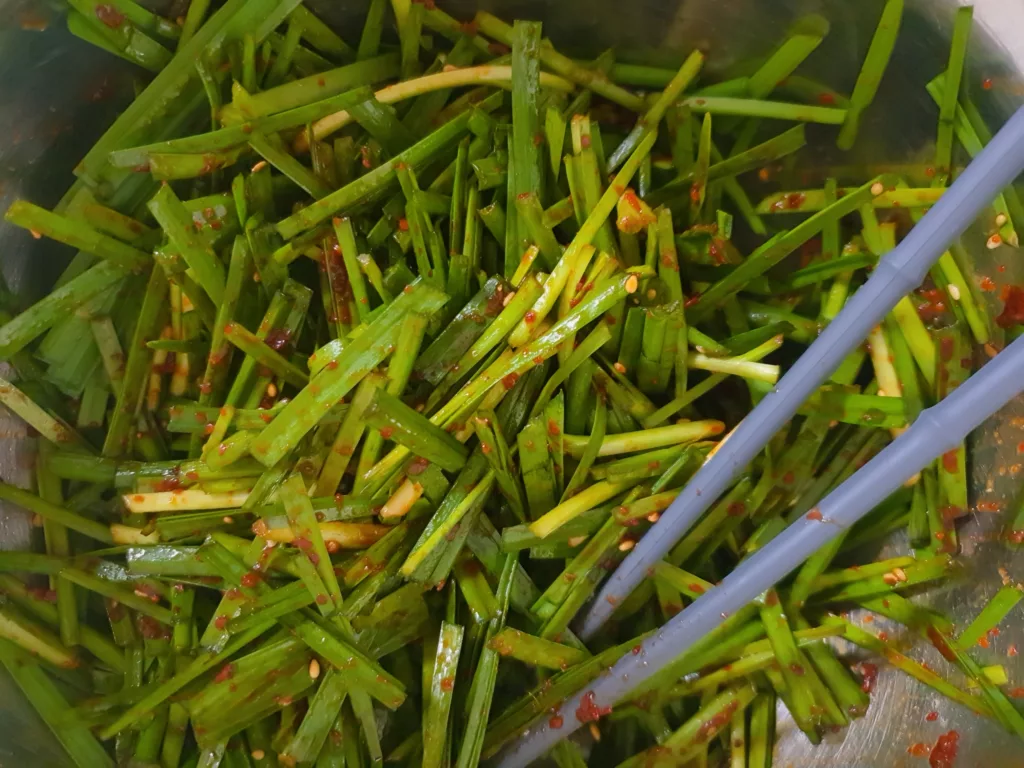
What is Bossam?
Bossam is essentially a boiled or steamed pork dish made with pork belly. It’s a communal dish that’s usually served with fermented shrimp sauce, spicy radish salad, and, of course, kimchi. The term ‘Bossam’ means ‘wrapped,’ and it is eaten by wrapping the steaming pork in lettuce or cabbage leaves, topping it with sauces, and devouring it in a single mouthful.
Suyuk vs Bossam : How to Tell the Difference
Suyuk is a boiled pork delicacy, similar to bossam. The main difference is not in the meat, but in the accompaniments. While bossam is typically served with kimchi, suyuk is frequently served with other sides.
Last Thoughts
So, whether you’re a seasoned connoisseur of Korean food bossam or a newcomer delving into the depths of suyuk, there’s no disputing that both dishes provide a rewarding experience. As you embark on your culinary journey with these dishes, keep in mind to appreciate them in their natural state and to spread the joy of Korean cuisine to others.
Remember that the best food stories aren’t simply about the dish, but also about the experiences it evokes. Happy cooking and good eating!
autumn cafe bread cafe chuseok chuseok food dessert donut foliage view foodtruck galbijjim gentlemonster gochujang gyeongbokgung gyeongbokgung palace highway rest stop jamsil jeon knotted korean cafe korean dessert korean pancake London Bagel Museum miyeok guk newjeans new menu paris baguette ramen ramyeon recipe rice scoville seoul seoul cafe shin ramen shin ramen hack shin ramen the red smokepoint songpyeon soondubu jjigae spc group spiciest ramen ssamjang sykhye winter yakgwa

